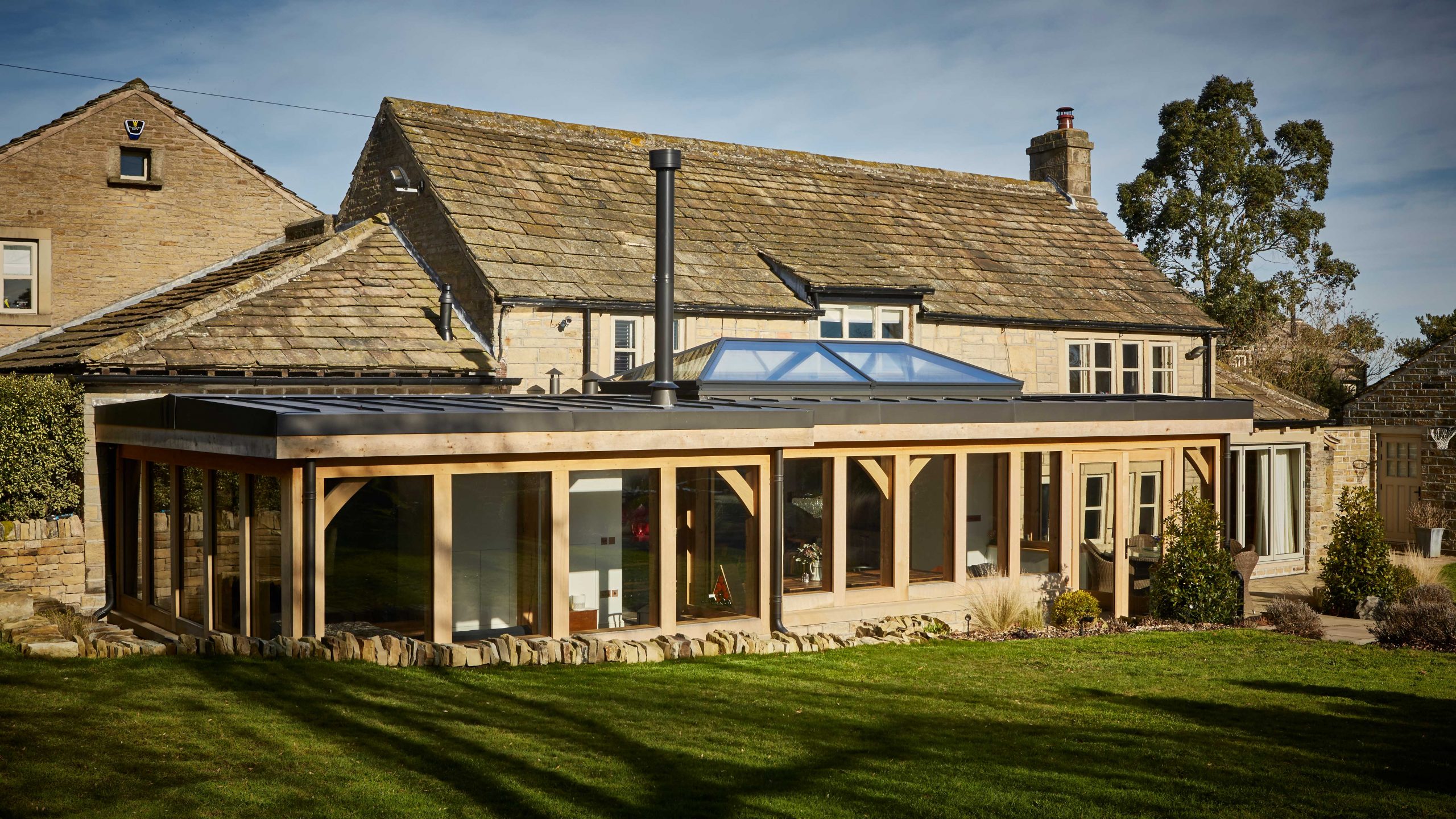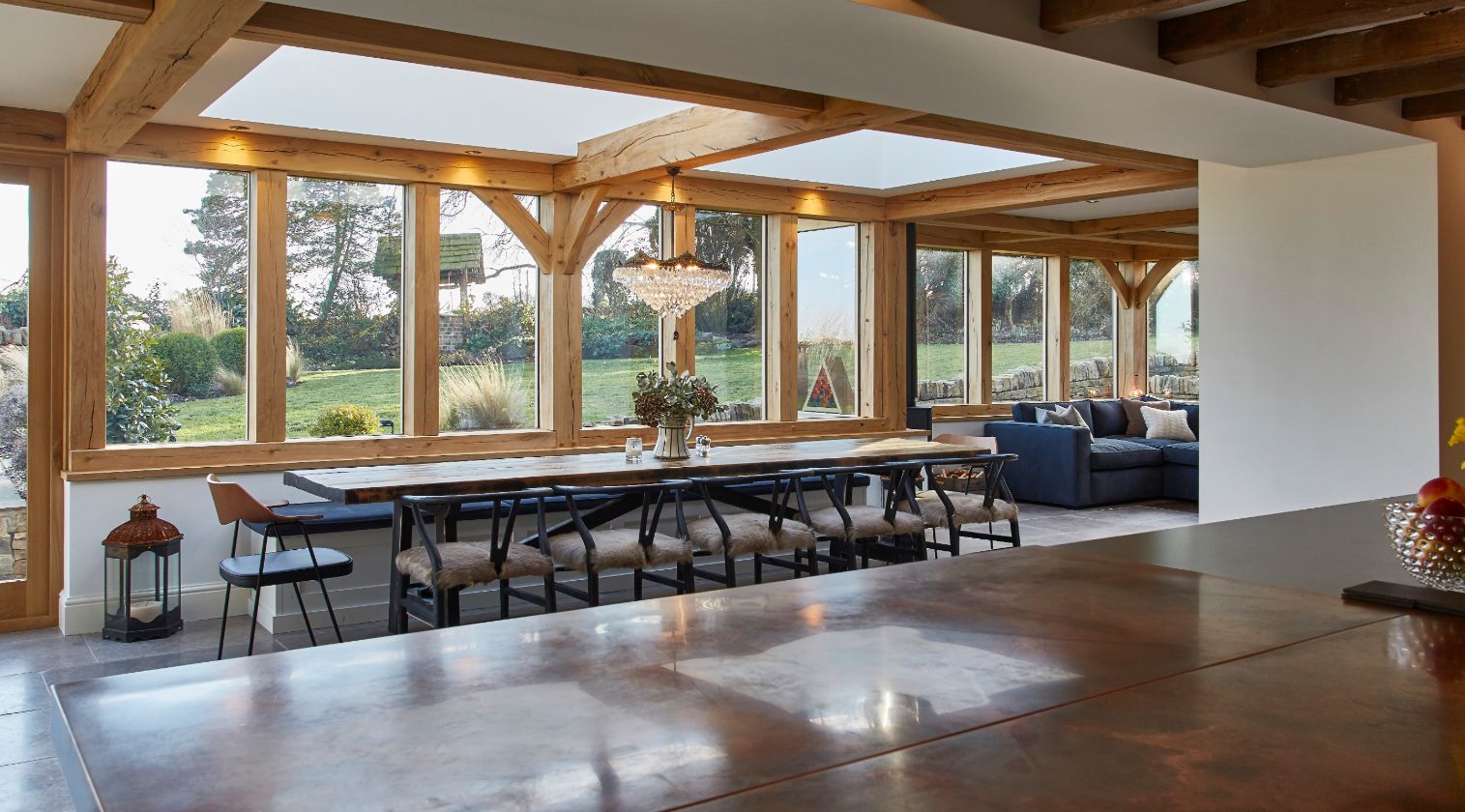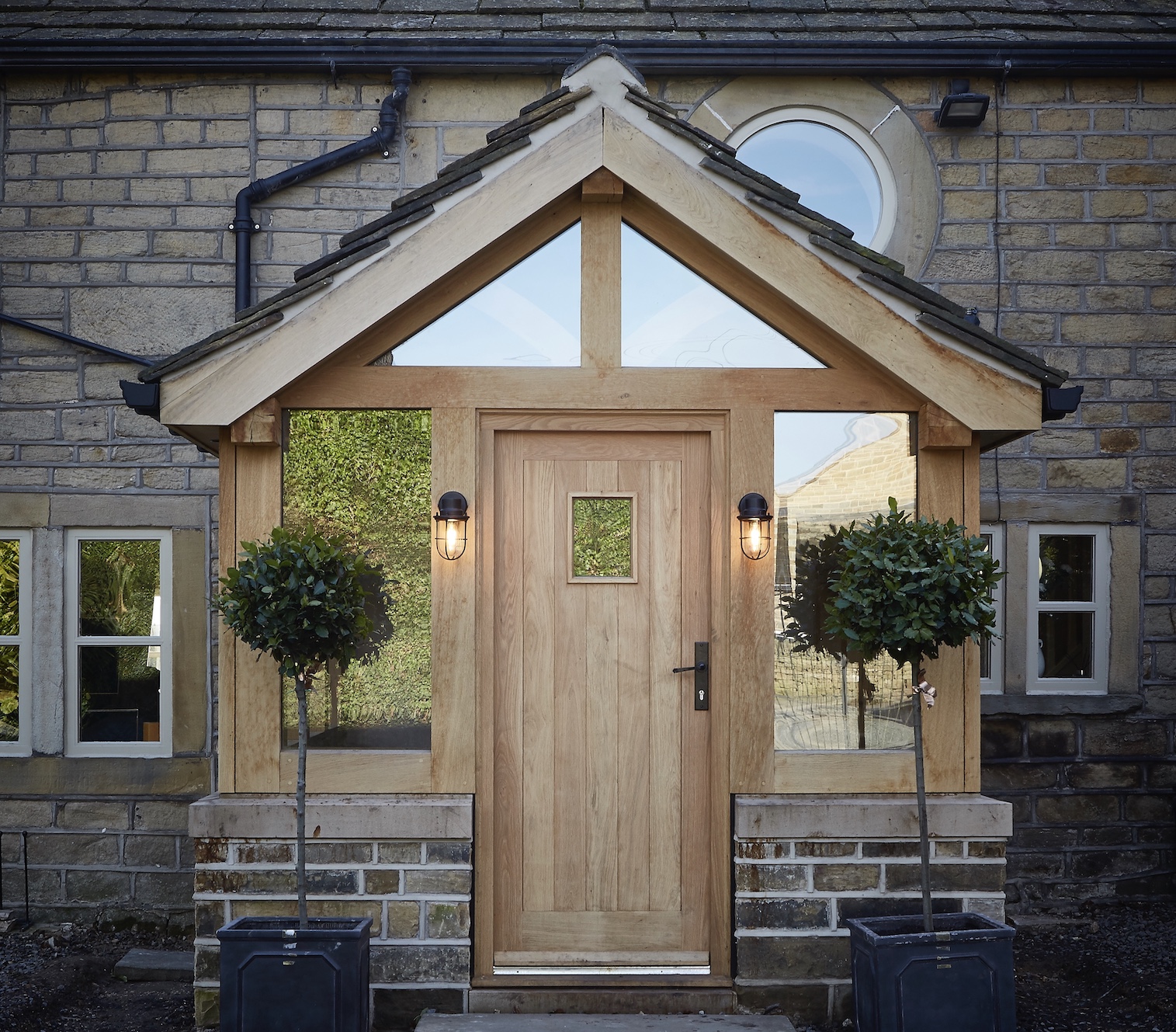Not Just oak! A wide variety of building materials can be used to complement your oak frame, including:
- Masonry walls constructed from stone, brick or block and render
- Roof lights made from powder-coated aluminium glazing with high spec glass to ensure UV protection for your furniture
- Structural Insulation Panels (SIPS), insulation and plasterboard infill panel systems.
We also offer numerous roofing materials, the most popular being cedar shingle and blue slate, however “greys” reclaimed stone slates are commonly used here in Yorkshire. Pantiles, rosemary, concrete, artificial stone and of course glass are also used from time to time.
The balance and how much of each material is used in each project is influenced by the setting in which the building sits.
We pride ourselves on having a good eye for this process and will work with clients to ensure the structure is visually balanced, achieving outstanding aesthetics as well as customer satisfaction.


